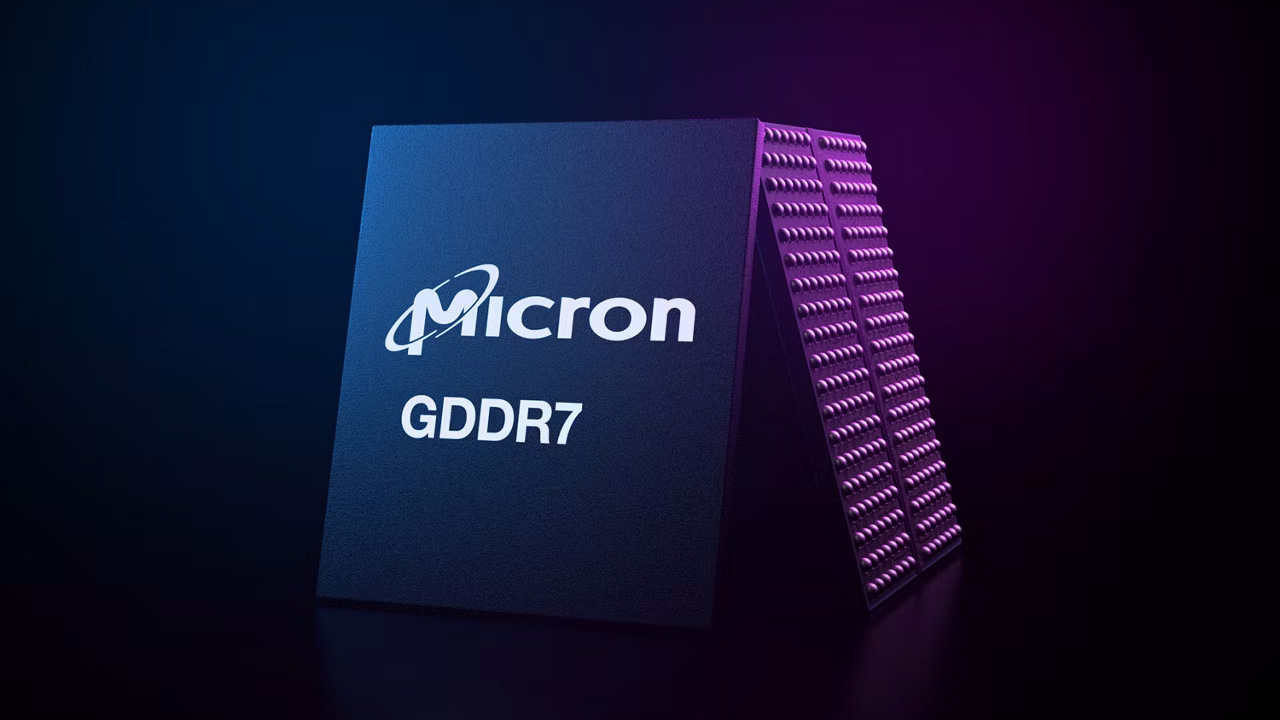
Micron has revealed that its next-generation GDDR7 graphics memory technology will offer a 30% performance improvement for all gamers. Discovered by Harukaze5719 on X (Twitter), The next-generation graphics memory standard is specified as having a 30% improvement in frames per second over its GDDR6 counterpart (GDDR6 and G6X), entailing both ray tracing-focused titles and pure rasterization-only games.
Specifically, Micron is saying these changes will occur with its upcoming 32Gb/s GDDR7 modules, in comparison to its GDDR6 (non-X) 20Gb/s version, which is currently one of the fastest speeds on the market for standard GDDR6 memory. Micron neglected to share what benchmarks were run to get its 30% metric, but 30% is a huge improvement regardless, assuming these uplifts are from memory alone.
micron, 30% FPS improve28Gbps: https://t.co/hj9RtqyraN32Gbps: https://t.co/sWJAe1oDnG pic.twitter.com/lsToW4nwr9June 29, 2024
There's a lot of evidence to back up Micron's statement. Micron's new GDDR7 boasts an impressive 60% bandwidth improvement over GDDR6, and it does so with 50% improved power efficiency. Response times have also been reduced by 20%, which will help sensitive workloads such as machine learning and AI image generation.
The new modules are rated at a whopping 32Gb/s, which is almost 10Gb/s higher than the fastest GDDR6X modules ever created. With a test setup comprised of 12 Micron GDDR7 ICs connected to a 384-bit wide interface, Micron says its next-gen memory can offer more than 1.5TB/s of bandwidth. By contrast, the RTX 4090 with the exact same memory configuration, but with 21Gbps Micron GDDR6X modules, offers "just" 1.008 TB/s of memory bandwidth.
Micron's performance estimations are impressive and a testament to the kinds of improvements we could see in future graphics cards. But they must be taken with a grain of salt. Even though GDDR7 has massive performance implications, GPU makers such as Nvidia are inevitably going to cut the bus width of next-gen cards by a significant amount, which will handicap the full 30% performance improvement Micron is advertising for its 32Gb/s GDDR7 memory. We could see an RTX 5090 with GDDR7 and the same 384-bit bus interface as the RTX 4090, but we don't expect Nvidia to use the same memory interface down the whole RTX 50 series stack, as has been the case with previous generations of GPUs. AMD and Intel will likely do the same once both come to the table with GDDR7-equipped graphics cards.
GDDR7 is the next generation of graphics memory, succeeding GDDR6 and its more performant sibling, GDDR6X. GDDR7 will start at 28GT/s or 32GT/s on release, but plans are already underway from Micron, Samsung, and SK Hynix that will see the production of higher speed modules — as high as 40 GT/s in the future.
Nvidia is all but certain to be using these next-gen GDDR7 modules and is probably responsible for driving the test setup that Micron used to create its 30% performance improvement metric, using some sort of prototype RTX 50 series GPU. According to rumors and leaks, Nvidia will be the first to produce graphics cards with GDDR7 modules. AMD is expected to keep using older GDDR6 modules for their next-generation GPUs, and probably won't transition until the RX 9000 series. Intel's next-generation GPUs are less clear, but Team Blue could go either way and utilize GDDR6 and/or GDDR7 for Battlemage, or wait to go to GDDR7 until its third-generation Celestial debut.







